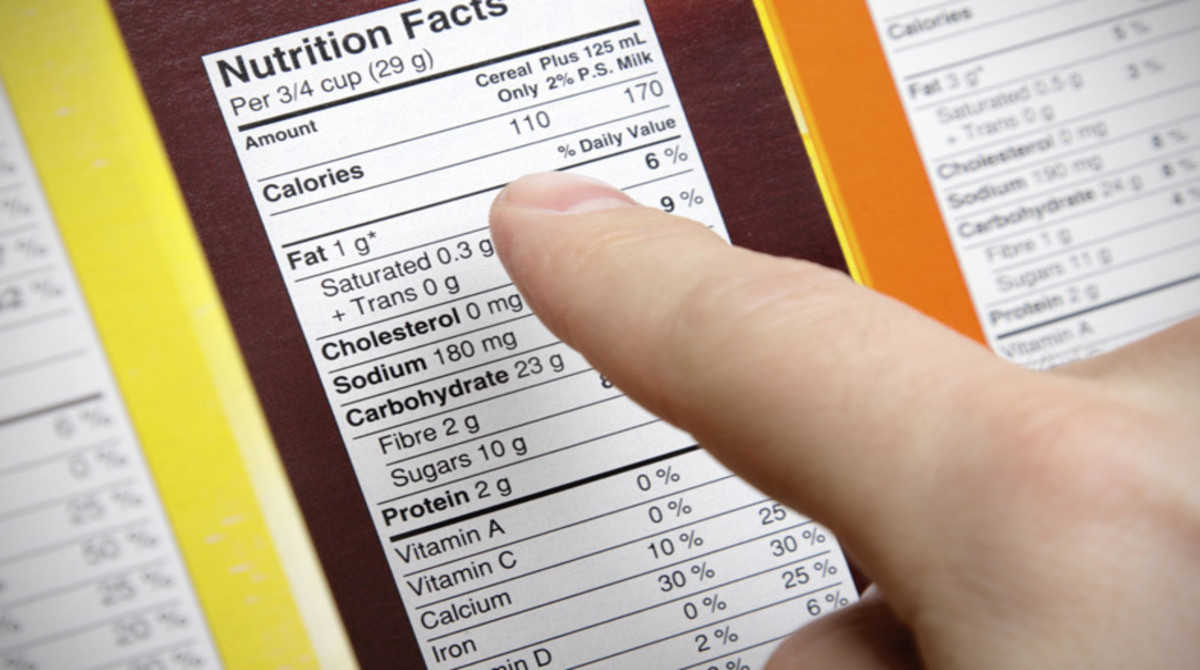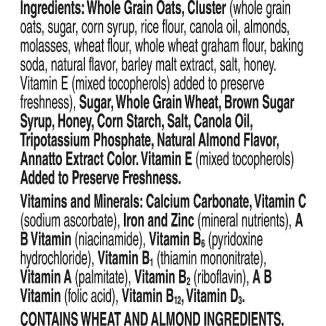Why Is It So Critical To Read A Food Label?
July 20, 2022

Shutdowns are prevailing, families are staying home longer, consumers are being frugal with their spending to cope with constrained incomes, and habits are changing permanently as we cope up with the anxieties of health and hygiene brought upon us by the pandemic.
Businesses have undergone a transformation at the same time with e-commerce services meeting consumer needs at their homes, consumption of packaged food rising through the period of the pandemic, and, at the same time, consumers choosing to eat healthy, fresh meals at home. The focus on immunity and good health, especially coming from food and good nutrition is a priority for consumers. This makes it imperative for consumers to read labels, compare similar products and choose the ones that are best suited for our health.
Food labels are key to the understanding of the constituents of food, its nutritional value, and its correlation to our health and well-being. Food ingested works in our body in many ways; some to its benefit and some that must be checked. While a small part of the food label is fairly simple and straightforward, certain parts require a contextual understanding of the values and their actual meaning.

Reading food labels is complex, and it is hard for consumers to understand the stated details. Here is a step-by-step guide on how to read and comprehend a food label
1. Turn the pack – the most vital information is at the back!
The front of the pack health claims is often just the half truth about any product. They are often written in an attractive manner, to influence consumer purchase. Often products mention claims like low fat, and high fibre in the front – only for us to realize that the product is high in sugar and sodium.
The nutritional information table at the back, is where the story lies. Unfortunately, the section is usually overlooked or misunderstood. A detailed nutrient-wise information panel dissects the products and tells you exactly what you are eating.
2. Read the Ingredient List

The ingredient list is one of the most critical parts of a food label. It gives you a list of items that constitute the product. Whilst reading the ingredient list, take care of the following points –
The ingredient list is written in descending order of quantities. The first 3-4 ingredients on the list pretty much sum up what the product is made up of. Make note of the first 3 ingredients on the list – if the names include refined grains/flour, hydrogenated fat, or a type of sugar, then the product must be skipped. Select products that are made up of whole grains, pulses, nuts & seeds or fruit and vegetables largely.
Shorter the ingredient list, healthier the product. Go for products that are made in less than 10 ingredients.
Look for ingredients on the label that you recognize and are familiar with.
Look out for masquerading ingredients – especially sugar and salt. Sugar is present in 70 different forms in packaged food products and one must be wary before you select any product blindly.
Sodium is not only present in salt, but also in food additives like baking powder, baking soda, preservatives, flavour enhancers, sequestrants and more.

3. Check the food additives below the ingredient list
Food Additives are substances that are added to food to maintain or improve the safety, freshness, taste, texture, or appearance of food. Additives are needed to ensure processed food remains safe and in good condition throughout its journey from factories or industrial kitchens, during transportation to warehouses and shops, and finally to consumers.
The use of food additives is only justified when their use has a technological need, does not mislead consumers, and serves a well-defined technological function, such as to preserve the nutritional quality of the food or enhance the stability of the food. Food additives can be derived from plants, animals, or minerals, or they can be synthetic.
Food additive classes are often declared together with their specific names or the INS (International Numbering System) codes. While most food additives are listed under the ingredient list, special rules apply to flavourings, colourings and preservatives.

Please note, that FSSAI mandates the use of approved flavouring agents (and other additives) only. So even if the label mentions ‘artificial flavouring substances’, they are safe to consume and possess no toxicity threat.
Consumer choice is now beginning to tip in the favour of natural substances – be it flavour, colour, or any other additive. Clean label products, created without the use of artificial substances are manifesting an increase in consumer adoption. We are seeing an increasing number of consumers consciously choose products that are natural and sans any artificial additives.
4. Nutrition Information Panel / Nutrition Label
The nutrition information on the food label is a mandatory description intended to inform the consumer of the nutritional properties of the food product. Nutrition Information is often written per 100gm/100ml or per serve on the label.
The nutrition information on the food label holds the most critical information about the product and can help you make healthier choices. 3 things that you MUST check on the nutrition information panel before you pick any product –
Serving Size
One serve is the amount of food customarily consumed per eating occasion, which is expressed in metric units or given in common household measures like a teaspoon, tablespoon, or cup that is appropriate to the food. This will tell you how many servings are there in the pack. Serving sizes are standardised to enable us to compare similar food products.
Beneficial vs Harmful Nutrients
All nutrients declared on the nutrition label can be divided into 2 sections – beneficial nutrients and harmful nutrients.
Beneficial nutrients are the nutrients that you must get more of – protein, dietary fiber, calcium, iron, vitamin D, vitamin C, vitamin A, and potassium. These nutrients are beneficial to the body and our health.
On the other hand, harmful nutrients are the nutrients that you must limit or get less of – saturated fat, trans fat, total sugar, added sugar, and sodium. Saturated fat, sodium, and added sugars are nutrients listed on the label that are directly associated with adverse health effects and non-communicable diseases. Follow one rule for these nutrients – the lower the better!
% Daily Value - Per serve percentage (%) contribution to RDA
While the nutrition information panel on Indian food labels are mostly written per 100gm/ml, FSSAI does suggest that brands must mention the nutrition information per serve and the per serve percentage (%) contribution of nutrients to their respective RDAs. Per serve percentage (%) is also known as Daily Value (%) and is calculated for a standard 2000-kcal diet.

5. Allergens
Allergens are substances that cause an immune response (allergic response) in certain people, which could even be life-threatening in extreme cases. Foods containing one or more of the eight common allergens must be listed prominently on the label. Allergens are usually found below the list of ingredients. The common 8 allergens mandated for declaration by FSSAI are,
Cereals containing gluten; i.e., wheat, rye, barley, oats, spelt or their hybridized strains and their products
Crustaceans
Milk & Milk products;
Eggs and egg products;
Fish and fish products;
Peanuts, Tree nuts and their products;
Soybeans and their products;
Sulphite in concentrations of 10mg/kg or more.
How to choose a food product if you have a Food Allergy?

6. Date Marking
You may see 3 types of date marking on your food product – ‘date of manufacture or packaging’, ‘Expiry/Use by’ or ‘Best before’.
The date of manufacture is the date on which the food product was manufactured and packaged.
Expiry/Use by date tells you how long the food will remain at its best quality and will not be fit for consumption post the date. This is often used in perishable products like milk, bread, etc.
Best Before date guarantees the quality of certain properties of the product to be effective up to this date. Once the date has passed, it may just lose its freshness, taste, aroma or nutrients, but it does not necessarily mean that the food is no longer safe to eat. The ‘best before' date is often mistaken by consumers to be the same as the ‘expiry date’. Often foods that may have passed its ‘best before’ date go straight in the trash, though they would still be completely edible.


The best way to not get tricked by food labels is to attempt to read and comprehend them. Understanding the food label is the key to making healthy food choices and stocking up your kitchen with food that positively impacts your health. The secret here is to look for a few data points that are most critical.
If you find reading and comprehending food labels complex, you are not alone. 6 out of 10 consumers find food labels complex and 9.5 out of 10 consumers seek a simplified version of the food label.
Also Read - Why Date Marking Essential On Food Product Labels?
REFERENCES :
Food Labels : Your questions answered (2019). Barbara A. Brehm. Green wood Publishers.
Food Safety And Standards (Labelling And Display) Regulations, 2019.
Food Safety And Standards (Food Products Standards And Food Additives) Regulations, 2011.
The New Nutrition Facts Label : What's in it for you? U.S. Food & Drug Administration
Making the Most of the Nutrition Facts Label : American Heart Association

Rashida Vapiwala (Founder at LabelBlind®, Food Label Specialist, Ph.D (Food Science and Nutrition))
Rashida is passionate about solving problems for the food industry using technology. She loves creating tech-led solutions in the space of Nutrition.
